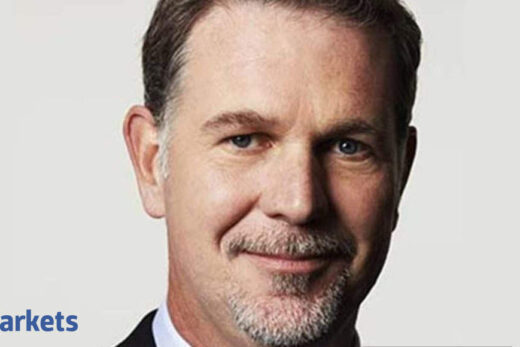Fourth-quarter earnings are just about over, which means investors can officially turn their attention to 2021, a year that has long been synonymous with a return to pre-pandemic life. Investors widely expect the global economy will come roaring back thanks to vaccinations and pent-up demand.
Analysts also have great expectations for profit growth among U.S. businesses as the country makes its way toward defeating the coronavirus. According to Bloomberg Intelligence, analysts expect a whopping 23.2% increase in earnings per share among S&P 500 companies, up from 22.3% at the start of the year. The upward revisions span the first three quarters of this year, a potentially better sign than counting on an explosive rebound several months from now. Average first-half growth expectations jumped to 43% from 29%.
That kind of boom would build upon a better-than-expected final three months of 2020 for S&P 500 companies. Overall, earnings rose by 5.4%, handily beating analysts’ estimates of an 8.8% decline. Almost 80% of large companies posted positive surprises, while mid- and small-cap companies expressed rampant optimistic guidance. It’s little wonder, then, that analysts see an earnings bonanza on the horizon. The wild card is inflation: While S&P 500 Index revenue is expected to exceed its prior peak by the third quarter, companies’ net margin may remain below the 2018 high.
So, will 2021 usher in the next Roaring ‘20s? We’ve asked Bloomberg Opinion columnists who focus on business and finance to give their thoughts, based on an analysis of earnings presentations from the biggest U.S. companies.
Inflation is under control — for now. It’s no secret that costs are rising in the manufacturing sector. Copper has jumped to an almost 10-year high, freight rates have skyrocketed and wage inflation is picking up as Covid-absenteeism exacerbates pre-pandemic shortages of skilled industrial laborers. Heading into the latest earnings season, analysts were watching for any sign that those rising costs were crimping profit margins. By and large, manufacturing CEOs were sanguine about raw material inflation, Barclays Plc analyst Julian Mitchell wrote in a Feb. 12 note. All of the industrial companies he covers that had reported results were expecting less of an impact from rising input costs than in the 2017-2018 period, the last time this risk surfaced. That’s because of hedging policies and cost cuts elsewhere in the business — but also pricing power. When sales plunged violently in the second quarter last year amid pandemic lockdowns, manufacturers didn’t chase sales with price cuts, putting them in a stronger starting position to counteract cost inflation. Things may get interesting from here, though: Air conditioner-maker Carrier Global Corp. is among those that intend to pass on the uptick in raw material costs to its customers through price increases this year. Innovations are also helping companies reset the bar on price. In one of the more extreme examples, Deere & Co. is targeting a 6% price increase this year in the division that houses its largest agricultural equipment and precision-farming products. —Brooke Sutherland
Better days for Big Oil. Apart from pestilence, Big Oil faced a war in 2020: that brief but vicious Saudi-Russian spat last March. Collectively, the big five — BP Plc, Chevron Corp., Exxon Mobil Corp., Royal Dutch Shell Plc and Total SE — lost $82 billion last year. Cash flow was miserable and even Exxon took a giant writedown. Backward-looking as earnings are, we learned one thing: Big Oil drowns when barrels are below $50. Yet energy is the best-performing sector in the S&P 500 so far this year. Strategy shifts — lower spending, chiefly — have helped. Lurking in the background is another tailwind: Rising bond yields. As investors backed away from Big Oil, they plunged into energy-transition stocks such as Tesla Inc., with bubbly valuations built on long-range hopes. As rates rise, those green terminal values shrink. Meanwhile, the reason for those rising bond yields, stimulus-stirred inflation concerns, boosts commodity bets like oil, now trading above $66. Expect Big Oil’s 2021 to be better (it can’t really be any worse). —Liam Denning
Big banks have a banner year, but now what? JPMorgan Chase & Co. posted record profit in the fourth quarter. Goldman Sachs Group Inc.’s dealmakers had a record year. The two, combined with Bank of America Corp., Citigroup Inc. and Morgan Stanley, saw collective assets grow to $10.7 trillion at the end of last year (up 20% in 12 months) and reported $79 billion in net income. Not bad for a global pandemic. The question is whether they can replicate that success, which stemmed in large part from 2020’s market volatility. Stephen Scherr, Goldman’s chief financial officer, acknowledged that there “might be a less impressive opportunity set” in global markets in 2021. Fourth-quarter earnings received a major boost from releasing credit reserves — another non-repeatable source of “profit.” As JPMorgan Chief Executive Officer Jamie Dimon put it: “We’re not going to be sitting here cheering about that, we’re cheering that Americans are doing better, but we don’t consider that earnings … It’s ink on paper.” Watch for M&A activity from banks not named Morgan Stanley, which acquired both E*Trade Financial Corp. and Eaton Vance Corp. last year. —Brian Chappatta
Big Tech’s peak growth may be near. The technology business is booming. Across the board, the industry’s major players reported impressive earnings results, proving again the demand resilience for their products and services in both difficult and improving economic environments. But there are potential pressure points. Some companies warned their 2021 growth rates may slow as certain tailwinds recede. Facebook Inc.’s chief financial officer said the company faces challenges to revenue growth in the second half of 2021. Similarly, e-commerce software provider Shopify Inc. said it expects 2021’s sales growth will be lower than last year. Management cited the wider availability of vaccines, which would likely lead to a consumer spending shift back to physical stores. If the words of caution prove true, the combination of decelerating growth rates and the sector’s elevated valuations could become a double-whammy for investors. —Tae Kim
Big Retail remains online. Amid cold weather and a pickup in Covid-19 cases, shoppers continued to dine, work and entertain themselves at home in the fourth quarter. That meant the retail industry sorted into familiar groups of winners and losers for the period that included the crucial holiday season. Amazon.com Inc. recorded a robust 44% increase in sales from a year earlier, while big-box heavyweights Walmart Inc. and Home Depot Inc. also reported strong growth. Clothing stores continued to struggle, as demonstrated by the 17% plunge in comparable sales at Macy’s Inc. Last year, retailers had to triage and focus on immediate tasks presented by the pandemic such as procuring PPE for their workforces, establishing in-store safety protocols and adding curbside pickup. Now, a year into the health crisis, they can focus again on more strategic goals, through projects such as remodeling stores, revamping loyalty programs and improving their e-commerce fulfillment strategies to make that offering faster or more profitable. —Sarah Halzack
It’s a streaming world after all. Last quarter confirmed a new age in media and telecommunications, as streaming-video and 5G wireless technologies evolved from mere concepts to chosen new profit centers for industry giants. Walt Disney Co. for the first time lumped all its on-screen entertainment together as an integrated programming division, symbolic of its shifting priorities. Streaming revenue jumped 73%, as Disney+ rounded the corner on 95 million subscribers, quickly closing in on Netflix’s 204 million. Even if social restrictions begin lifting thanks to Covid-19 vaccines, movie theaters may not spring back and theme parks may keep safety measures in place through to next year. So the question becomes how Disney converts the global fascination with its brand into a profitable streaming future. Smaller competitors such as ViacomCBS Inc. and Discovery Inc. talked up their new streaming products, Paramount+ and Discovery+, but will have to work hard to not get lost in the shuffle. HBO Max parent AT&T Inc. faces perhaps the biggest challenge, as it straddles both the streaming wars and the 5G wars. AT&T, T-Mobile US Inc. and Verizon Communications Inc. have demonstrated eagerness to spend what it takes to win in 5G. In these two industries, traditional earnings metrics have officially taken a backseat to streaming subscriber numbers and spectrum accumulation. —Tara Lachapelle
Big Pharma is a mixed bag. Large pharma companies’ 2021 outlooks included several that might be viewed as conservative, though for the most part they’re based on a progressive Covid-19 recovery from midyear. This suggests some risks if new virus variants take hold and negate vaccine successes, which is an unlikely scenario. Solid guidance complemented Johnson & Johnson and AbbVie Inc.’s fourth-quarter outperformance, with both likely to deliver margin gains in 2021. By contrast, GlaxoSmithKline Plc’s 2021 view looks bleak. Drugmakers remain open to M&A despite high valuations among biotechnology companies, with all eyes on Pfizer Inc. and Sanofi, which, like their peers, may favor bolt-on and in-licensing deals. Price drags will persist and aren’t isolated to the U.S., where proposals in Congress could pose further risk. Sentiment toward the sector may also be driven by the “recovery trade” focused on companies which suffered heavily during 2020 because of the pandemic. —Sam Fazeli, Bloomberg Intelligence
Call it a comeback. A manufacturing recovery has been underway for several quarters but appears to be picking up steam. Companies such as N95 mask-manufacturer 3M Co. and safety-products distributor Fastenal Co. have benefited from pandemic trends, but these companies also tend to be among the first to feel economic upsurges because the time period between customer orders and deliveries is relatively short. Both have started to see growth in the more industrial parts of their businesses. Even factory-equipment companies like Emerson Electric Co. and Rockwell Automation Inc. that tend to benefit from the later stages of a recovery are starting to trend in the right direction. “The recovery in manufacturing is happening at a much faster pace than we were anticipating,” Rockwell CEO Blake Moret said in the company’s earnings statement. Most companies are returning their budgets to at least pre-pandemic levels but some — including 3M and Stanley Black & Decker Inc. — are going a step further as they funnel investment dollars to environmental and supply-chain initiatives. —Brooke Sutherland



